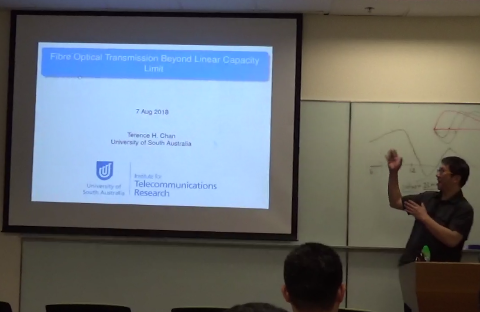
Fibre optical communications underpin the transmission of global data traffic, supporting our information driven society and economy. However, as the demand for transmission capacity has been continuing to increase exponentially, the global fibre optic communication system (based on current technologies) will soon reach its limit, known as the Linear Capacity Limit. Such limit is due to the nonlinearity in optical fibres, which can significantly distort signals in a nonlinear fashion, especially when signal power is high.
Recently, a novel solution to incorporate fibre nonlinearity into the communication model has been introduced based on Nonlinear Fourier Transform (NFT). In this approach, fibre dispersion and nonlinearity are incorporated when defining the independent nonlinear modes in the NFT domain that propagate through the fibre without any distortion. Analysis has suggested that this NFT based approach does not suffer the same fibre nonlinearity-induced limitation as in conventional systems (where data rate will peak and decay as power increases beyond a threshold).These evidence suggest that NFT is a very promising approach to cope with nonlinearities and to achieve transmission capacity beyond linear capacity limit. In this talk, we will discuss such a new NFT based transmission systems and identify some challenges that it faces.
Terence Chan completed his PhD in 2001. He was an Assistant Professor at The Chinese University of Hong Kong in 2001. From Feb 2002 to Jun 2004, he was a Post-doctoral Fellow at the Department of Electrical and Computer Engineering at the University of Toronto. In 2004, he became an Assistant Professor at the Department of Computer Science in University of Regina, Canada. He is now an AssociateProfessor in Institute for Telecommunications Research at University of South Australia.
His expertise is in the areas of information theory and communications networks. Some highlights of his work include the characterisation of the relation between information inequalities and group theoretic inequalities, the proof for the equivalence of characterisation of network coding capacity region and the cone of all entropy functions and sub-optimality of linear network codes. In the past few years, he has focused on the area of fibre optical communications based on Nonlinear Fourier Transform.
